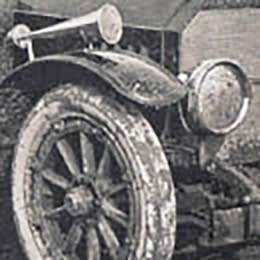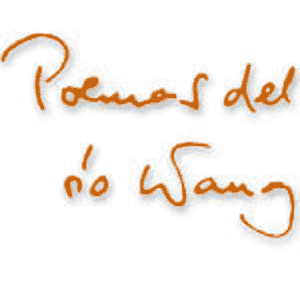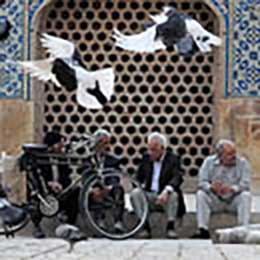Mihály Tar, a Székely farmer, died in 1824 in Havadtő, Hungary, Maros County (today Viforoasa, Romania). On his grave, a simple oval stone bears the inscription: „1824 25 októb. Itt nyugszik a világból kimult Tar Miháj életének 42 esztendejében” (1824, October 25. Here rests Tar Miháj, departed from this world in the 42nd year of his life).
Twenty-eight years after his death, his son, also named Mihály Tar, commissioned a new gravestone for his father. By then, the son was a megyebíró—a county judge of the Reformed Church. His rank is reflected both in the monument-like design of the new stone and in the master he chose to carve it. The craftsman was Károly Menyhárt, the only stonemason along the Kis-Küküllő River confident enough in his own artistry to carve his name onto his works. He signed this one, too:
“OC[tóber] 25an / AZ 1825ben / ELHUNYT 42 / ÉVES: JON HON / FI, ERÉNYES / GAZDA ÉS APA / TAAR MIHÁLY / EMLÉKÉRE / Emelte Jo Fija / Taar Mihály 1852ben” On the back: „1852 Készítette Menyhárt Károly”
“OC[tober] 25 / In memory of / TAAR MIHÁLY / Died at age 42 / in 1825 / a good patriot / a virtuous farmer and father. / Raised by his good son / Taar Mihály in 1852.” On the back: “Made by Károly Menyhárt, 1852.”
The ornamentation on the stone’s pediment also signals the family’s rank: a hand holding seven tools arranged like sunrays. On a nobleman’s tombstone, this is where the coat of arms—in Latin, arma—would normally appear. But the same word, arma, also means the tools of one’s trade and, intriguingly, the instruments of Christ’s Passion (arma Christi), which were often carved on symbolic grave markers or roadside crucifixes.
Thus, while the son outwardly dedicated the monument to his father, he was in fact erecting a memorial to himself—showing off his lineage, his virtue, and his means to commission such a work. The stone is both tribute and self-portrait.
The most enigmatic part, however, lies on the back. There, the relief is divided by a lush, three-rooted tree. To the left stands an old man with a long pointed beard and curious garments, holding a scroll; to the right, a seated stag beside the inscription of date and maker’s name.
In Szekler Land—traditionally both conservative and open to innovation, where ancient ballads survived into the 19th century, yet altarpieces were painted after Dürer’s prints already in his lifetime—it’s hard to say whether this carving’s motif is archaic or romantic. Scholars even suggest it might be both: the old man and his scroll possibly alluding to the Chronicle of Csík, a romantic-era forgery about the Huns that was taken as genuine at the time, and from which Balázs Orbán himself traced the origins of Szekler families in his monumental two-volume The Great Székely Land.
The reverse relief is easier to read in the drawn reconstruction accompanying the original gravestone at the new Museum of Ethnography’s Szeklers exhibition.
Tar Mihály’s two gravestones—together with two kopjafas (carved wooden grave posts) and a simple wooden marker—represent Szekler funerary art in this exhibition. In a small circular box-like display, the original tombstones are shown, while on the wall behind them a row of beautifully drawn grave-marker sketches forms an atmospheric backdrop. Unfortunately, since there are no identifying museum labels, we can only assume these too come from the recently excavated cemetery in Havadtő.
The Szeklers exhibition was one of the first major temporary shows in the newly opened, hypermodern building of the Museum of Ethnography in Budapest. Was, I should say—because it closes today. If you feel curious, you still have time to catch it until eight this evening.
The exhibition doesn’t overcomplicate its subject. In a handful of compact displays, it presents the most recognizable markers of Szekler identity:
• traditional woodcarving and its tools, with a large Szekler gate spread out on a scaffold,
• examples of painted Szekler furniture,
• a few pieces of traditional Szekler dress,
• implements of local farming,
• and, under Gyárfás Jenő’s grand 1883 painting Pig Slaughter, a stand devoted entirely to the arma—the tools—of the butchering feast.
There’s also a section on Szekler pottery, a small display of the Szekler intelligentsia’s scholarly objects, and devotional items from the famous Csíksomlyó pilgrimage, accompanied by a looping video of the procession. In short, exactly what visitors from Hungary expect to see when they go to the Szekler Land.
At the end, a large map helps to situate the Szekler seats—the traditional administrative districts—showing their relation to each other, to historical Hungary, and to present-day Romania.

The exhibition’s simplicity and straightforwardness are particularly striking when compared with the concept of the new Museum of Ethnography as a whole. The museum’s vast permanent exhibition does not organize its material by regions or cultures. Instead, it moves from room to room showing, through countless examples, how many different kinds of questions one can ask about so-called ethnographic objects—how many contexts they fit into, and how differently they can be interpreted.
That idea is symbolized right at the entrance, by a single object: the St. Lucy’s Chair. According to folk belief, this chair had to be built day by day from December 1 until St. Lucy’s Day, December 13, using nine different kinds of wood. During Mass, the maker could stand on it to recognize any witches present.
The chair displayed here was made in 1871 by a young man named János Körmendy from the village of Vál. It entered the museum together with a written record by the parish priest, Mihály Gürtler, who confiscated it. Later, botanist Ferenc Hollendonner identified the types of wood, and anthropologist Géza Róheim analyzed its cultural significance. Then, in 2004, the people of Vál reclaimed it as part of their own heritage and symbolically “brought it with them” when Hungary joined the European Union.
Next to the display case, the wall projection cycles through all these names, ideas, and contexts—fading and reappearing—illustrating how a single object can belong to many narratives, raise many questions, and invite many interpretations. This multi-layered, multifaceted, and intellectually vibrant approach defines every hall and object in the museum’s permanent exhibition.
None of that complexity, however, is visible in the Szeklers exhibition, which occupies a space separate from the permanent display. The show doesn’t question its own premises; it never pauses to ask how, in the 2020s, an ethnographic collection should be presented—or how this version might differ from one staged, say, in 1940.
The truth is, it probably wouldn’t differ much. And that’s not entirely a flaw. After all, no exhibition like this has been seen for decades, neither here in Hungary nor across the border. It simply had to happen: there was a strong public desire for it. And perhaps, from this “starting stove,” as the Hungarian saying goes, future exhibitions can build and evolve further.
There’s also a more discreet, behind-the-scenes reason for the show’s existence. The museum’s curators have shared in private conversations that when the government poured an unprecedented amount of money into creating the new Museum of Ethnography, they decided not to spend it on a concept that might quickly age, but instead on developing an entirely new methodological approach. That bold vision became reality in the permanent exhibition.
The trade-off, however, was a relative decrease in the prominence of traditional Hungarian ethnography. As rumor has it, when Prime Minister Viktor Orbán came to inaugurate the museum and walked quickly through the exhibition, he muttered under his breath: “There’s too little Trianon in this.”
In a way, the Szeklers exhibition can be read as a response to that very comment—a kind of counterbalance. Next to the permanent show, which opens itself to anthropology, intertextuality, and complex cultural dialogue, this one addresses a different audience: those less inclined toward theoretical reflection, and more eager to reconnect with familiar symbols, heritage, and the tangible traditions of Hungarian ethnography.















































































































Add comment